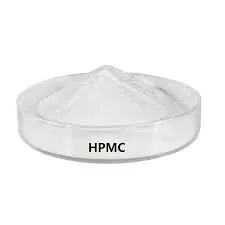
Dec . 11, 2024 11:00 Back to list
Exploring Various HPMC Variants and Their Applications in Industries
Understanding HPMC Types An Overview
Hydroxypropyl Methylcellulose (HPMC) is a versatile, semi-synthetic polymer derived from cellulose, widely used in various industries including pharmaceuticals, food, cosmetics, and construction. HPMC is recognized for its thickening, binding, emulsifying, and film-forming properties, making it an essential ingredient in many formulations. In this article, we will explore the different types of HPMC, their properties, and applications.
What is HPMC?
HPMC is obtained by modifying cellulose, which is naturally found in plant cell walls. During the manufacturing process, cellulose is etherified with propylene oxide and methyl chloride, resulting in a compound that has varying degrees of hydroxypropyl and methyl substitution. The ratio of these substitutions dictates the properties and applications of the resulting HPMC product.
Types of HPMC
HPMC can be categorized based on its viscosity and degree of substitution. The main types include
1. High Viscosity HPMC High viscosity HPMC is characterized by its ability to form thick gels and is often used in applications requiring substantial viscosity. It is commonly employed in pharmaceutical formulations as a binder in tablets and as a stabilizer in suspensions. The high viscosity also makes it an effective thickening agent in various cosmetic and personal care products.
2. Medium Viscosity HPMC This type strikes a balance between thickening and fluidity, making it suitable for a wider range of applications. Medium viscosity HPMC is often found in food products as a thickener or emulsifier and in paints and coatings. It is versatile and provides enhanced stability in emulsions, making it a preferred choice in various formulations.
3. Low Viscosity HPMC Low viscosity HPMC is utilized when a lighter texture is desired. It is commonly used in applications where a thinner consistency is essential, such as in liquid detergents, sauces, and salad dressings. Its lower viscosity also makes it a suitable choice for making films and foams, providing a unique texture without compromising the overall formulation.
hpmc types

4. Specialty HPMC Specialty grades of HPMC are tailored for specific applications, such as controlled-release drug formulations and advanced building materials like construction adhesives and mortar. These products may have unique properties tailored for particular chemical stability, solubility, or release profiles, catering to the needs of specialized industries.
Applications of HPMC
The multifunctionality of HPMC opens the door to a vast array of applications
- Pharmaceuticals HPMC is widely used in drug formulation for its binding, thickening, and controlled release properties. It plays a critical role in creating tablets, topical ointments, and hydrophilic matrices for sustained release.
- Food Industry As an additive, HPMC improves the texture and stability of food products. It acts as a bulking agent, emulsifier, and thickener, ensuring that products retain their desired consistency. In gluten-free products, HPMC helps mimic the textural properties of gluten, enhancing the sensory qualities of baked goods.
- Cosmetics and Personal Care HPMC is prominently featured in lotions, creams, and gels for its ability to enhance viscosity and stability. It helps in forming a protective barrier over the skin, improving the efficacy of skincare formulations.
- Construction In the construction industry, HPMC is used as a thickener and water-retaining agent in cement-based mortars, rendering them easier to apply and improving adhesion. It enhances the workability of construction materials without compromising their strength.
Conclusion
HPMC is undoubtedly one of the most important cellulose derivatives with various types suited for specific applications across different industries. Its unique properties of thickening, binding, and film-forming make it an invaluable component in pharmaceuticals, food production, cosmetics, and construction. Understanding the various types of HPMC can help manufacturers choose the right product for their specific needs, ultimately leading to improved product performance and consumer satisfaction.
-
Unlocking the Benefits of HPMC Products: A Gateway to Versatile Applications
NewsAug.07,2025
-
Unleashing the Potential of HPMC Ashland: A Comprehensive Look
NewsAug.07,2025
-
Tile Bonding Cellulose: The Key to Superior Adhesion and Durability
NewsAug.07,2025
-
Hydroxypropyl Methylcellulose Powder: The Versatile Component in Modern Pharmaceuticals
NewsAug.07,2025
-
Hydroxyethyl Cellulose: The Versatile Solution for Various Industries
NewsAug.07,2025
-
Hydroxyethyl Cellulose (HEC): The Versatile Polymer for Various Applications
NewsAug.07,2025







